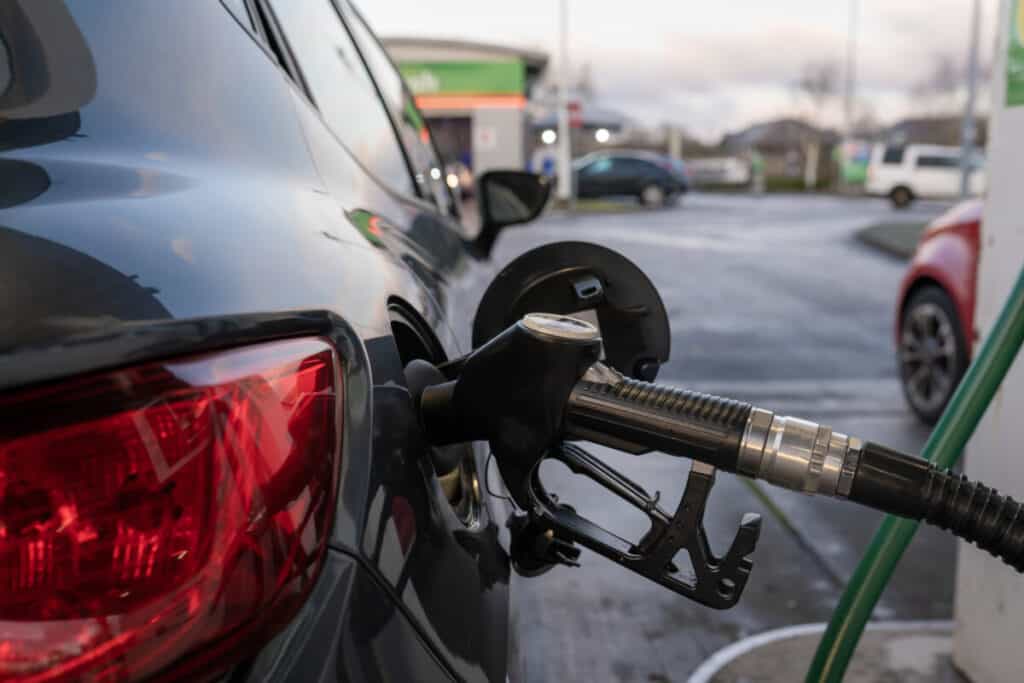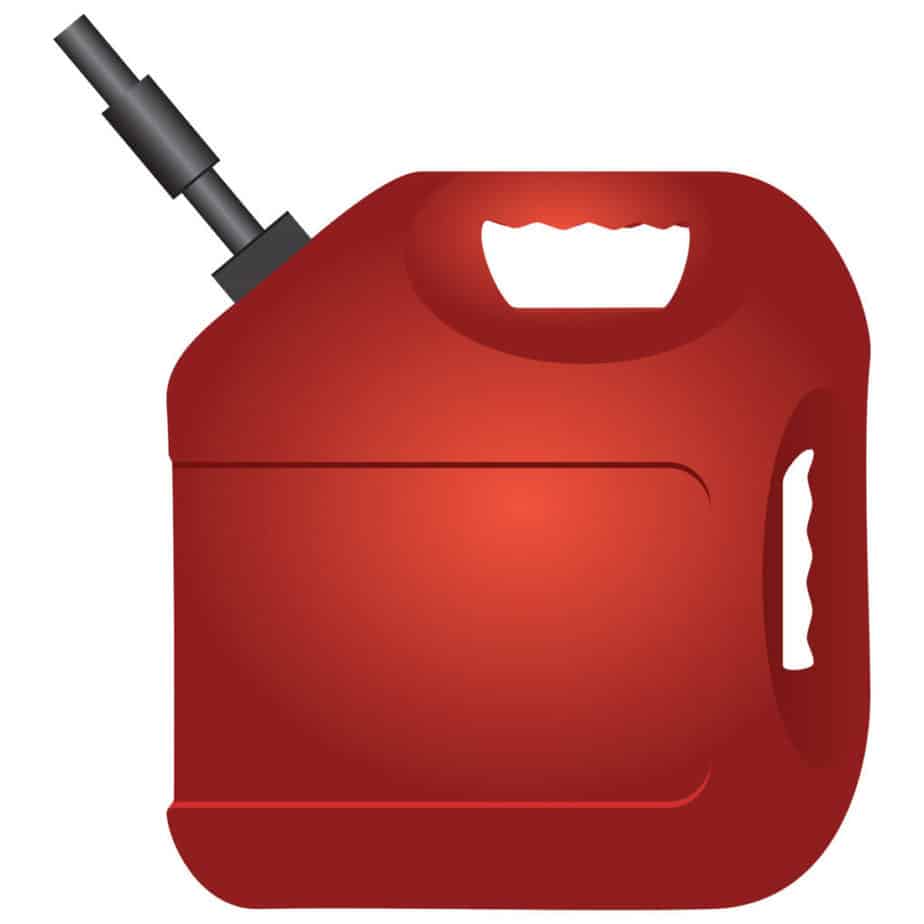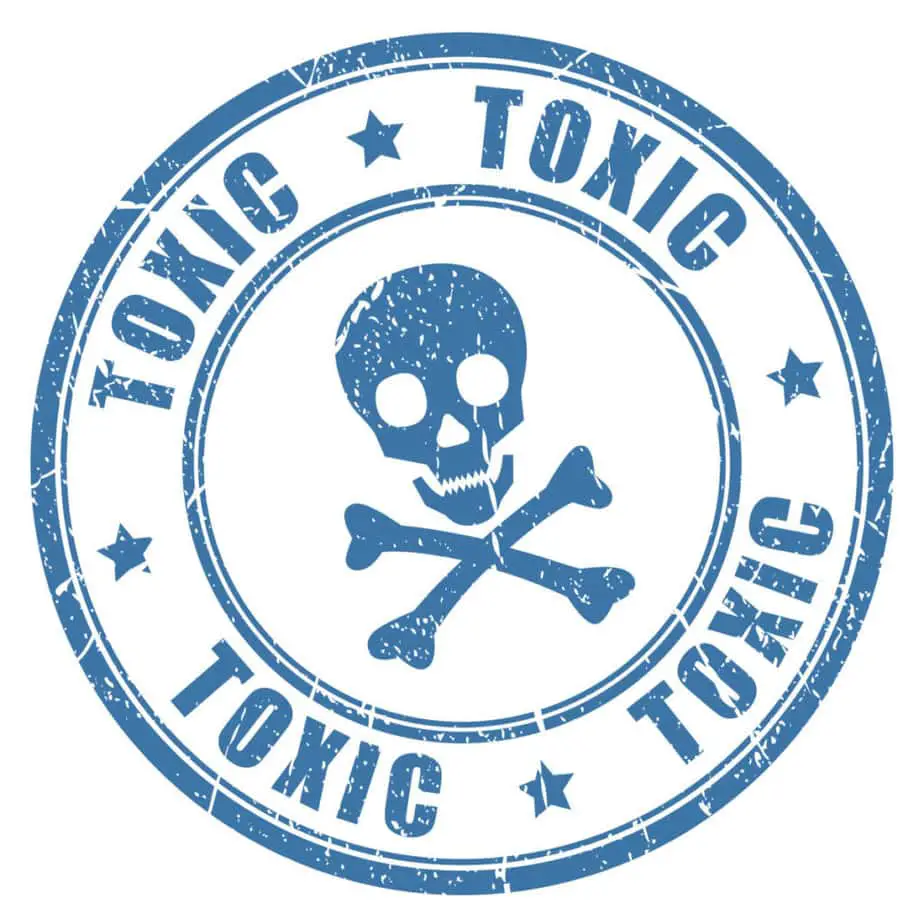
So you bought some gasoline twenty years ago in case you needed it, but it’s just been aging in your garage since then. Whether that’s your case or something similar, you’re in the right place.
Gasoline is a highly flammable and extremely toxic substance, so understanding how to properly dispose of it is critical. There is one main way to dispose of gasoline, but there are several different details to consider when doing so. Knowing when that time has come is very important, as is why it is important and how to do so legally.
Understanding and being familiar with when, where, and why you should dispose of old gasoline is extremely important to avoid any potential hazards it could cause.
When Should I Dispose of Old Gasoline?
Gasoline’s shelf life is typically between three to six months. However, storing conditions can affect its survivability. Ensuring that the room you’re storing your gasoline in maintains a room-temperature atmosphere will check another box of safety and protection.
As it is an extremely flammable substance, gasoline should be stored away from any sources of heat, including the sun, hot water heater, etc. Such heat sources can cause the gasoline to ignite and create an explosion that could destroy your home and potentially cause fatal injuries. If you have had gasoline sitting around, gathering dust for months on end, it may be a good idea to replace it.

Making sure you have stored your gasoline in the proper container is also super important. Red gas cans are designed to carry gasoline, yellow gas cans are for storing and transporting diesel, and blue gas canisters are meant to store kerosene (Source). If gas is being stored in the wrong color container, it is illegally stored.
Storing gas in improper containers is not only illegal, it is irresponsible. If someone picks up a red-colored gas canister, expecting to find gasoline inside but finds that it is full of kerosene while filling up a tank, they would be in trouble. You could create several different scenarios in which the wrong fuel is being stored in the wrong colored container and none of them would end well.
Another factor to consider when storing gasoline is which type of gas can to use. Type 1 gas canisters have just one opening. This opening is used for both filling the can with gas and dispensing gas from it. Type 1 canisters typically use a funnel to dispense fuel.
Type 2 gas canisters have two separate entry/exit points – one to fill and one to dispense. This option generates the result of Type 2 canisters being easier to use. It also makes them more convenient when filling so you don’t have to constantly remove the nozzle to refill as you would with a Type 1 canister.
Contamination
Contamination is another big factor when considering disposing of old gasoline. If you suspect your gasoline has been contaminated by water, dirt, or any other additional substance, it would be a great idea to test your theory.
Add some of the gasoline to a clear, clean container and observe it in good lighting. If you can see dirt or other particles floating on, in, or at the bottom of the fuel, do not use it.
Dirty tanks or stale/old fuel can cause a plethora of problems in whichever engine you put said fuel into. Accidentally filling up an engine with contaminated gasoline can clog your fuel filter, damage your fuel pump, and cause overall poor engine performance (Source).
Hazardous wastes are permanently contained in units that are carefully constructed to avoid contamination of ground and surface water (Source). Facilities at which this is achieved are most commonly landfills. If these wastes were not contained in such a way, there would be much concern surrounding the contamination of water supplies.
Where Should I Dispose of Old Gasoline?
When it is time to dispose of gasoline, whether is it old or you feel you need to because of contamination, search online for “hazardous waste disposal center” and find the center closest to you. Hazardous waste disposal centers are amazing facilities which take the hazardous waste and properly treat, store, and/or dispose of it for you.
Treatment typically consists of incineration or oxidation. What this accomplishes is it alters the character or composition of the hazardous waste received. Some of these treatment processes allow waste to be reused in manufacturing settings. Other processes reduce the overall amount of hazardous waste (Source).
Storage of hazardous waste is used when treatment or disposal is not presently available. There are several different methods used to store hazardous waste. Before treatment or disposal, hazardous waste is stored in containers, tanks, containment buildings, drip pads, waste piles, or surface impoundments that comply with the Resource Conservation and Recover Act (RCRA) regulations (Source).
Waste management officers have the responsibility of overseeing and coordinating the disposal of all types of waste, including gasoline. Their job is to ensure that these disposals are performed in an environmentally-friendly manner (Source). These officers are well-educated in engineering and environmental sciences, giving them the necessary knowledge to perform their tasks in the most effective way possible.
Why Should I Dispose of Old Gasoline?
As we have touched on briefly, old gasoline can create a vast number of complications. Car, motorcycles, aircraft, motorboats, and small engines could all be negatively affected by old gasoline. If you’ve ever wondered why there are multiple numbers/choices at the gas station when you stop to fill up, there’s a simple answer.
The numbers at the gas pump signify the octane rating. The higher the octane rating, the better combustion in the cylinders of your engine. As gas sits, it degrades in two main ways.
First, it loses the octane we just discussed. This leads to less effective combustion within your engine’s cylinders. The second way is that old gas loses its volatility. Less volatility means a weaker explosion of power, decreasing the engine’s performance (Source).
Engine performance aside, there are several other problems that old gasoline can create inside any vehicle’s engine. A few examples of these problems include engine knocking, sputtering, and clogged injectors to name a few (Source). This is a result of the gumming that can occur in gasoline as it sits.
This will be discussed a bit further on in this article, but gasoline gums up when it is exposed to oxidation. If gasoline that has done this is used in an engine, it will clog and stick, ruining the engine completely.
Toxicity
We don’t often think about what exactly makes up some of the everyday things we use. Gasoline is not an exception. We create gasoline by processing crude oil. It becomes a pale brown or pink liquid that is accompanied by a very strong, recognizable odor. Gasoline evaporates easily, so it is important to keep the lids and/or caps on gas canisters shut tight to avoid fumes from escaping and causing health problems or even fire risks.

Gasoline typically contains about 150 different chemicals, all of which are toxic to the human body. While limited exposure does not affect us, extended exposure can be harmful. If extended exposure is expected, review the safety section located below.
The BTEX compounds, which consist of benzene, toluene, ethylbenzene, and xylene, are a few of the chemicals included in gasoline (Source). The BTEX compounds are the basis of health concerns when regarding gasoline toxicity.
Environmental Concerns
Our environment is extremely important, not only to our survival but also to the survival of all other species that live around us. Keeping the environment safe from harmful, toxic substances improves the safety of our drinking water and our overall well-being.
There are properties termed “brownfield” because they have some type of contaminant in the soil. Petroleum brownfield sites are properties in which the contaminant is petroleum. I bring these up to demonstrate what happens when gasoline is not stored in proper containers, furthering the conversation above where we discussed where to properly dispose of old gasoline.
About half of the 450,000 brownfield sites in the United States are suspected to be impacted by petroleum. Much of this is the result of old and/or abandoned gas stations leaking old gasoline from their underground storage containers. Over half of the U.S. population’s source of water is sourced from groundwater (Source). So, what would happen if we don’t clean up these contaminated areas?
Well, half of the United States population would eventually have to utilize another water source to stay hydrated. Cleaning up these areas and maintaining that cleanliness has been the focus of many different organizations and efforts around the United States to avoid the aforementioned potential water source problem.
How Much Does It Cost to Dispose of Old Gasoline?
The cost of old gasoline disposal will vary from company to company. There may be one company that does not charge up to a certain number of gallons, whereas another company might charge by disposal per gallon. Knowing what options surround you and what those companies will charge will make your life a lot easier. Knowing the amount of old gasoline you will need to dispose of will also help speed things along.
However, unless they are privately operated, most of these options do not charge a dime. The only cost would be the gas used to drive there and back. This helps encourage people to dispose of their hazardous waste effectively and responsibly, rather than harming the environment in one way or another.
Revitalization and Safety

Now, if you’re the type of person who likes to make the most of what you have and use it to its fullest, this section is one to pay attention to. Depending on how much gas you have and how old the gas is, the option to revitalize or dispose of it will change.
If you have a small amount of gas (less than a gallon) then it’s probably not worth the effort as it will not last very long. However, if you are dealing with more than a gallon of gas, especially if it’s gas that has been sitting in an old car, for example, then it would be a great idea to bring that gas back to effectiveness!
Staying safe while dealing with gasoline is essential, as it is an extremely volatile, flammable substance. NEVER smoke or light flames or any kind around gasoline. Wear safety goggles/glasses if you are working with gasoline for an extended period of time.
If you get gasoline on your hands or skin, get to hot, soapy water and wash your hands/skin thoroughly as soon as you can. If you spill gasoline on your vehicle or the machine you are filling, use paper towels or a rag to wipe away all of the spilled gas (Source). Wearing gloves is optional but would help avoid accidentally spilling gasoline on your body.
Keeping your vehicle/machine clean of gasoline will not only avoid potential combustion but also keep the paint from degrading, getting stains on it that are impossible to remove, or other general damage. Only use gasoline for motor fuel, which is its intended purpose.
Revitalization
Moving on to the revitalization process, there are several steps to consider. The longer gasoline sits, the more likely it will begin to gum up and deposits will form. If you know or suspect that the gasoline you’re dealing with contains such problems, the best solution is to filter it.
Using a funnel and coffee filters or at least two layers of lint-free cloth, filter the gasoline into the new UL (Underwriters Laboratories) or FM (Factory Mutual) approved red safety can for further storage (Source). You can also filter it into red gas canisters that are typically seen.
You might be wondering, why red? Well, red signifies that the substance/fuel inside is gasoline. For further knowledge and educational purposes, yellow signifies diesel, blue signifies kerosene, and green signifies oils.
Once the old gasoline has been filtered, it is time to add new gasoline to it. The new gasoline mixes with the old, filtered gasoline and brings it back to life.
Related Topics:
If you like the article above, here are some other similar articles you should check out!
